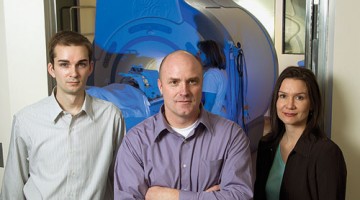As a teenager, Emily A. Bates hated never knowing when the next migraine would strike, disrupting her schoolwork, practices, and competitions. Now it’s payback time.
Bates, now a BYU chemistry professor, has published research in Science Translational Medicine that identifies mutations in a gene that make people more susceptible to migraine headaches. The study is the first demonstration of a genetic cause for the common migraine and is an important step in the search for a cure.
“I had migraines really frequently and severely,” Bates says. “I would lose my vision, vomit uncontrollably—it would wipe out an entire day. I decided then as a high school student that I was going to work on migraines, that I was going to figure them out and help find a cure.”
After earning a PhD in genetics from Harvard, Bates did post-doc research with a team of geneticists at UC San Francisco. This gene-hunting party worked with two families that appeared to have a dominantly inherited form of the affliction.
Zeroing in on genetic mutations these families had in common—mutations affecting the production of a protein known as casein kinase 1 delta—Bates designed an experiment to determine whether the same genetic trait triggered migraine symptoms in mice. It did; the researchers observed heightened sensitivity in the migraine mice.
“All sensations become amplified with migraines, including touch, heat, sound, and light,” says Bates, who has continued work on the project since arriving at BYU in 2009. “Now we can try to figure out what this specific protein affects in the body and how that is involved with migraines.”
Nearly 12 percent of Americans experience at least one migraine each year, and women are three times more likely to suffer from migraines.
“There haven’t been a lot of people working on migraine research, mostly because it’s so complex and unpredictable,” Bates says. “This represents a lot of work to find and see the differences.”
— Joseph G. Hadfield (BA ’03, MPP ’05)










